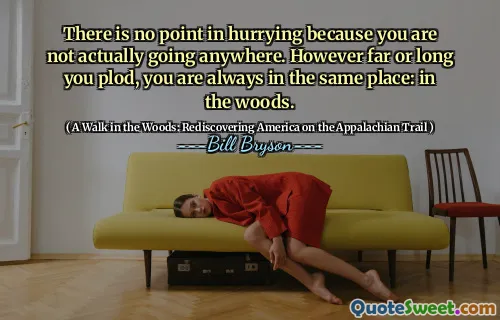Without doubt, the moose is the most improbable, endearingly hopeless creature ever to live in the wilds. Every bit of it-its spindly legs, its chronically puzzled expression, its comical oven-mitt antlers-looks like some droll evolutionary joke. It is wondrously ungainly: it runs as if its legs have never been introduced to each other. Above all, what distinguishes the moose is its almost boundless lack of intelligence.
The moose, as depicted in Bill Bryson's "A Walk in the Woods," is portrayed as an awkward and endearing animal, almost resembling a comical joke of evolution. With its long, spindly legs and oversized antlers, the moose embodies clumsiness, moving as if its limbs are unfamiliar with each other. This eccentric appearance contributes to its charm, making it a unique creature of the wild.
Furthermore, Bryson highlights the moose's lack of intelligence, which adds to its quirky nature. This combination of ungainliness and simplicity creates an image of an animal that seems hopeless yet lovable, capturing the reader's imagination while showcasing the beauty of nature's oddities.






